“That’s a Bingo!”
- Insights
Fully automated drones are already being used with increasing frequency in warehouse logistics. European consumers are becoming more open to package deliveries by drone – news from the not-too-distant future of the logistics and transportation sector.
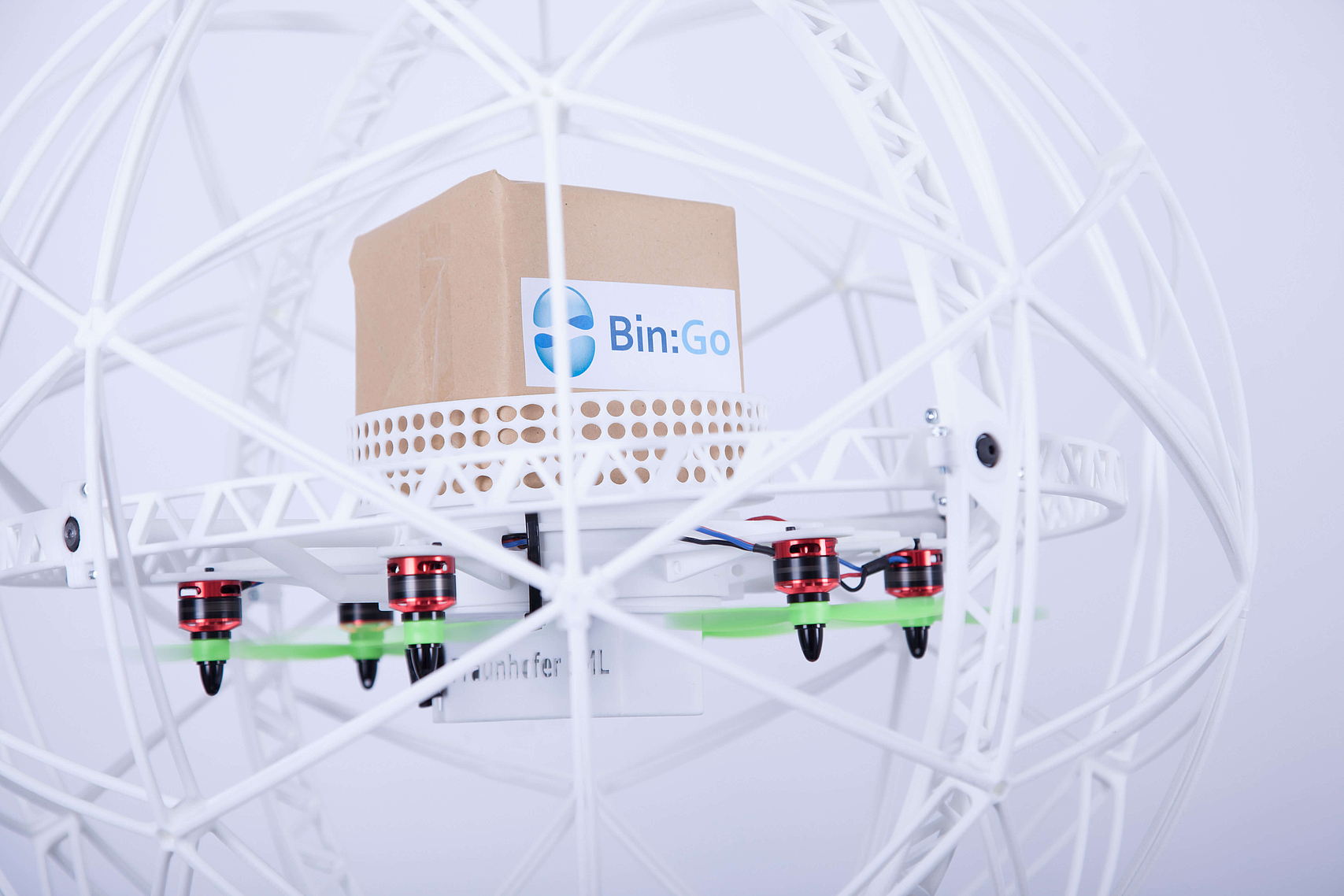
Small, agile, round—the rolling Bin:Go transport drone, developed by the Fraunhofer Institute for Material Flow and Logistics IML in Dortmund, reminds people—the comparison is allowed—of the sassy BB-8 droid from Star Wars that rolls over all terrains, beeping and whistling. It may not be quite as mobile as that, but almost.
Flying sphere with a sense of balance
But it has already mastered another challenge: Drones used in warehouse logistics tend to require significant energy, and thus, for safety reasons, must be kept physically separate from humans. The Bin:Go transport drone, however, is significantly more energy efficient and safer than other warehouse drones. A cage-like brace surrounding the entire device allows the Bin:Go drone to work alongside human workers. The high-tech device is chiefly used to carry small, light-weight items, such as samples or documents. Thanks to a gimballed mounting, the container remains completely level. This versatile drone primarily rolls along the floor but, when necessary, can take off in the truest sense of the term.
Impressions from the first Bin:Go Trials
This is how it works: Once a shipping order is generated, the desired item is placed inside the Bin:Go and the delivery instructions are entered. The ball-like drone then rolls fully autonomously to its destination, where the item can then be removed. Competing technologies like conveyor technology and pneumatic tube systems are at an obvious disadvantage: Because Bin:Go can be adapted according to demand, the number of inefficient trips are reduced. Bin:Go is still in the prototype stage. The Fraunhofer IML is currently looking for an industry partner for the next stage of development.
Future of logistics lies in indoor and outdoor delivery
The trend is clear: The use of drones in both logistics and delivering packages and transportation will only increase in the future (URL to old drone article).In the meantime, more and more people are able to imagine a fully automated drone landing on their doorstep to deliver a package. One out of every two people would welcome delivery of medicine or online purchases to their home by drone, according to a survey commissioned by the digital association Bitkom. This means that European consumers are increasingly open-minded when it comes to deliveries by drone. Small, agile drones that won’t get caught in traffic jams and that have minimal carbon emissions have a certain appeal, especially for lightweight or particularly urgent deliveries.
USA and China are pioneers
Trials using drones to make small deliveries have already been conducted in the USA and in China. Amazon announced that its fully automated and electric “Prime Air” aircraft will be tested for delivering small household products like toothpaste and razors. The prototype can fly 24 km and deliver goods weighing up to 2.3 kg within 30 minutes. In China, the first automated drone delivery service is up and running with help from a Falcon drone. The goal is to construct a network for urban air transport within Guangzhou.
Despite these concrete projects, research and development is still in the early stages. According to the Fraunhofer Institute, widespread delivery by drone is still a good 10 years away from being a reality. We may see other uses within a considerably shorter time frame, such as for handling inventory in the logistics sector or use in the auto industry, where drones could be deployed to fly past shelves to scan, process and transmit location and object data—intelligent, unmanned flying objects, so to speak. It remains to be seen what the future will bring and to what extent drones will revolutionize the industry.
This animated movie explains the idea behind Bin:Go
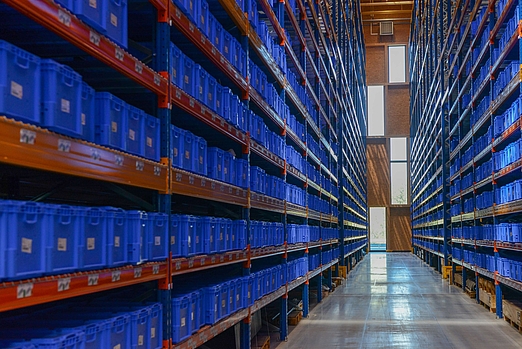
Efficient spare parts logistics for ENGEL
- Success Stories
The international machine manufacturer has centralized its worldwide spare parts supply. But parts are not just parts – some demand special handling under special conditions.
More information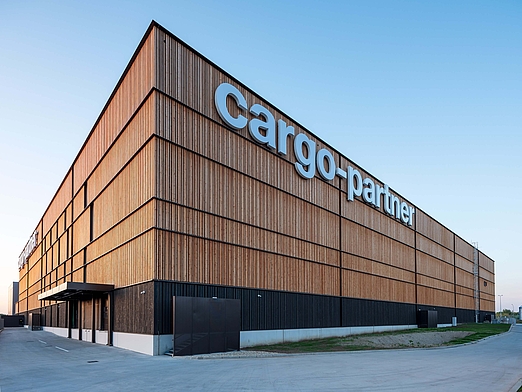
Simply stunning: 1,000 hippos, 1.5 olympic pools and 9 Burj Khalifas
- Insights
cargo-partner is strongly investing into the expansion of its worldwide logistics capacities and opened its new all-timber warehouse in June.
More information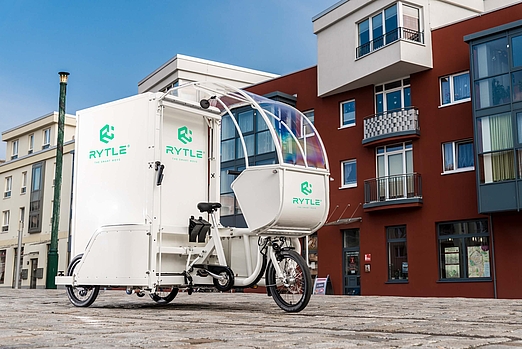
Rolling change on that last mile
- Insights
Revolutionizing delivery logistics in urban areas – that is the vision behind the electric cargo bike created by Rytle. Particularly impressive: it can handle entire palettes, and even…
More information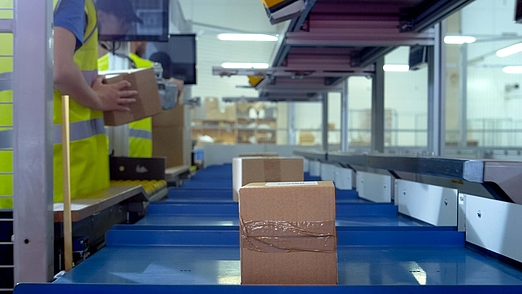
Bring it back
- Facts
Everyone knows that Christmas is busy for merchants and parcel services. However, the time after that is becoming challenging as well, due to the high numbers of return shipments.
More information